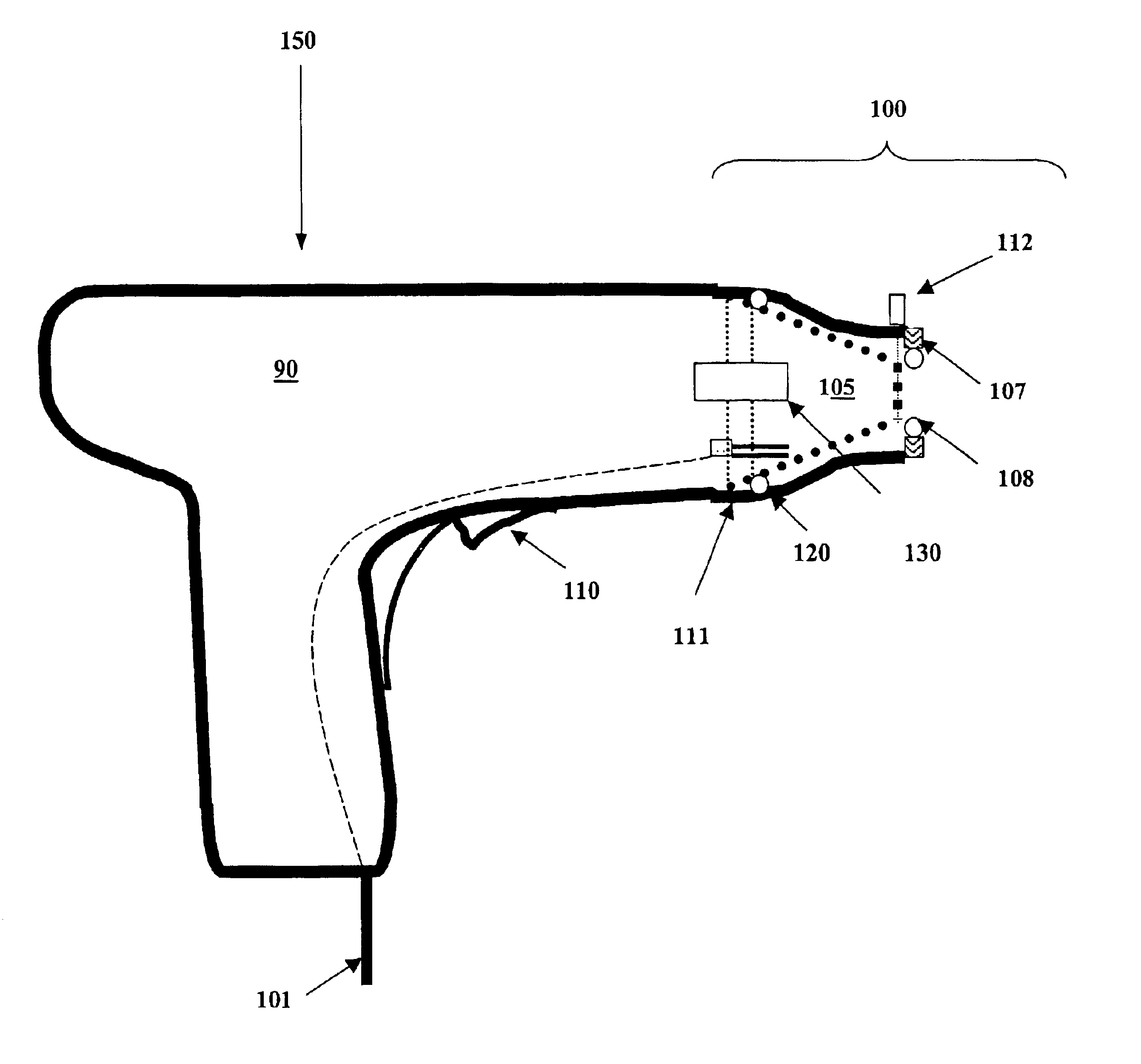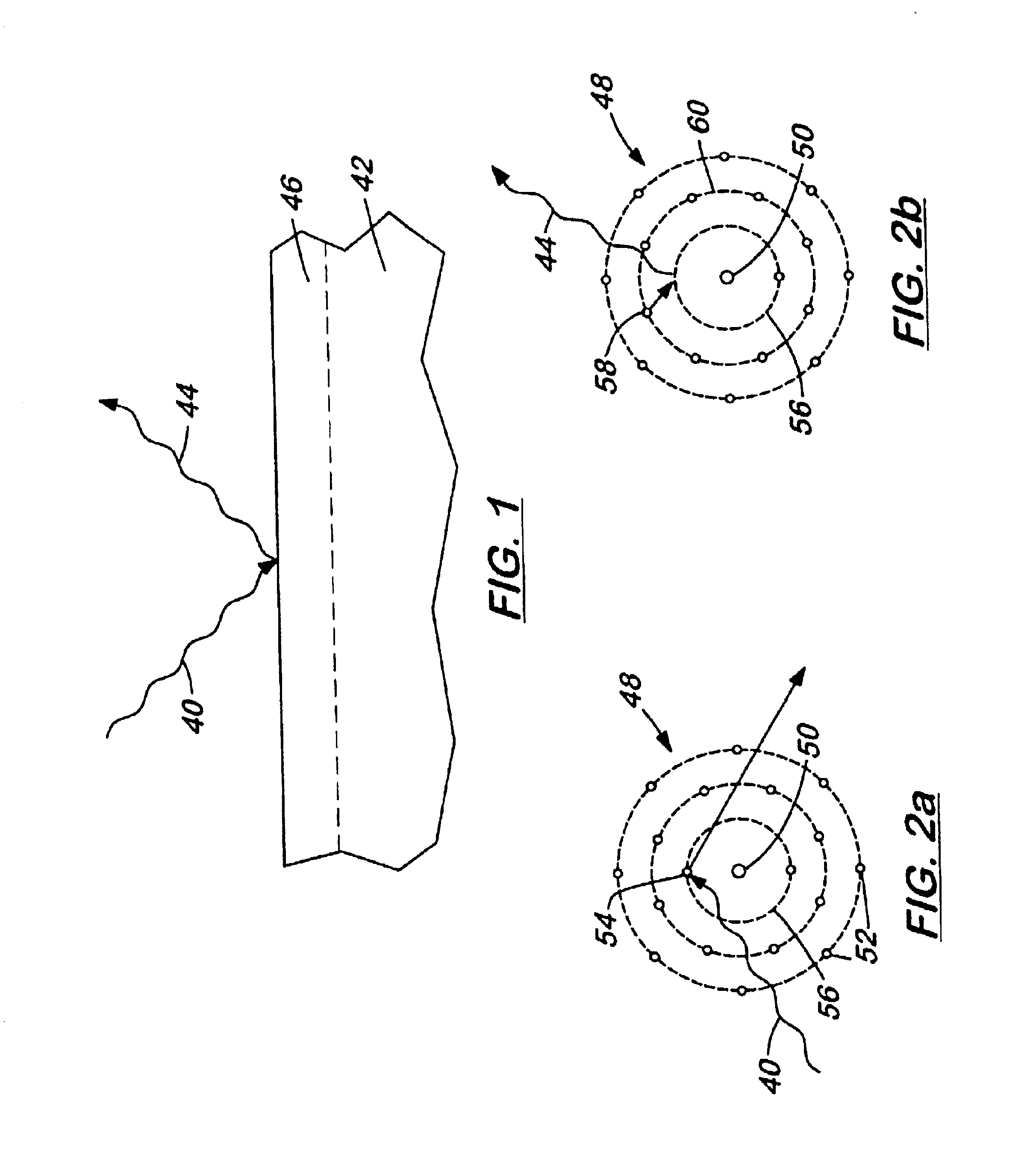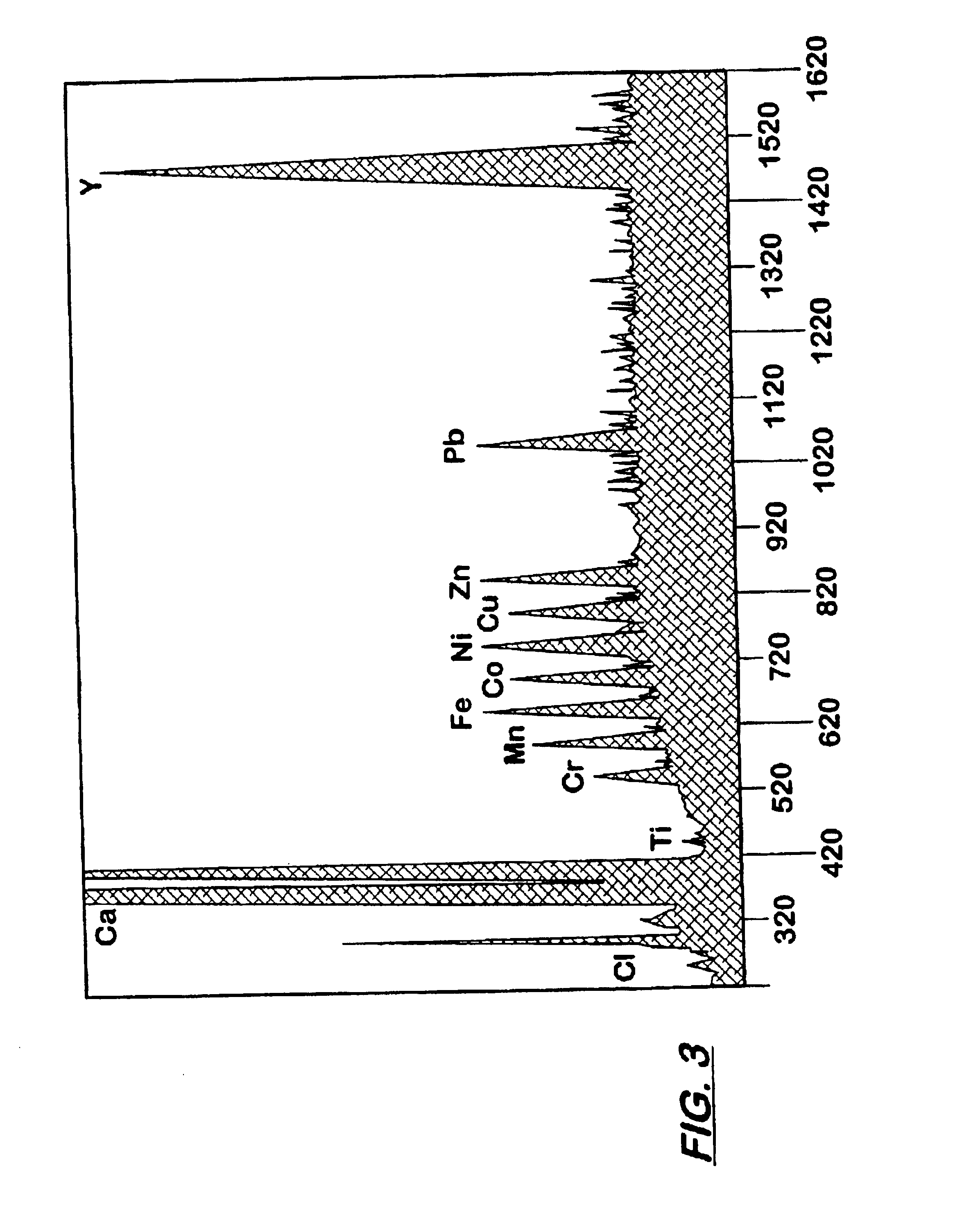Methods for identification and verification using vacuum XRF system
a vacuum xrf and method technology, applied in the direction of material analysis using wave/particle radiation, instruments, sensing by electromagnetic radiation, etc., can solve the problems of difficult and time-consuming, difficult to identify and verify objects using such materials, and many apparatus and methods for identification and verification of objects, etc., to achieve simple and easy use, the effect of reducing the number of atomic elements
- Summary
- Abstract
- Description
- Claims
- Application Information
AI Technical Summary
Benefits of technology
Problems solved by technology
Method used
Image
Examples
example
[0060]A first sample of a {fraction (1 / 16)}th inch aluminum sheet and a second sample of Mg metal were obtained. A hand-held XRF device similar to that depicted in U.S. Pat. No. D460,370 was made to contain an x-ray source and a peltier-cooled silicon detector. Vacuum conditions were created at the front end of the XRF device. The XRF device was then used to analyze the first and second samples while under the vacuum. FIGS. 9 and 10 depict the resulting x-ray spectrum for the first and second sample, respectively.
PUM
 Login to View More
Login to View More Abstract
Description
Claims
Application Information
 Login to View More
Login to View More - R&D
- Intellectual Property
- Life Sciences
- Materials
- Tech Scout
- Unparalleled Data Quality
- Higher Quality Content
- 60% Fewer Hallucinations
Browse by: Latest US Patents, China's latest patents, Technical Efficacy Thesaurus, Application Domain, Technology Topic, Popular Technical Reports.
© 2025 PatSnap. All rights reserved.Legal|Privacy policy|Modern Slavery Act Transparency Statement|Sitemap|About US| Contact US: help@patsnap.com



